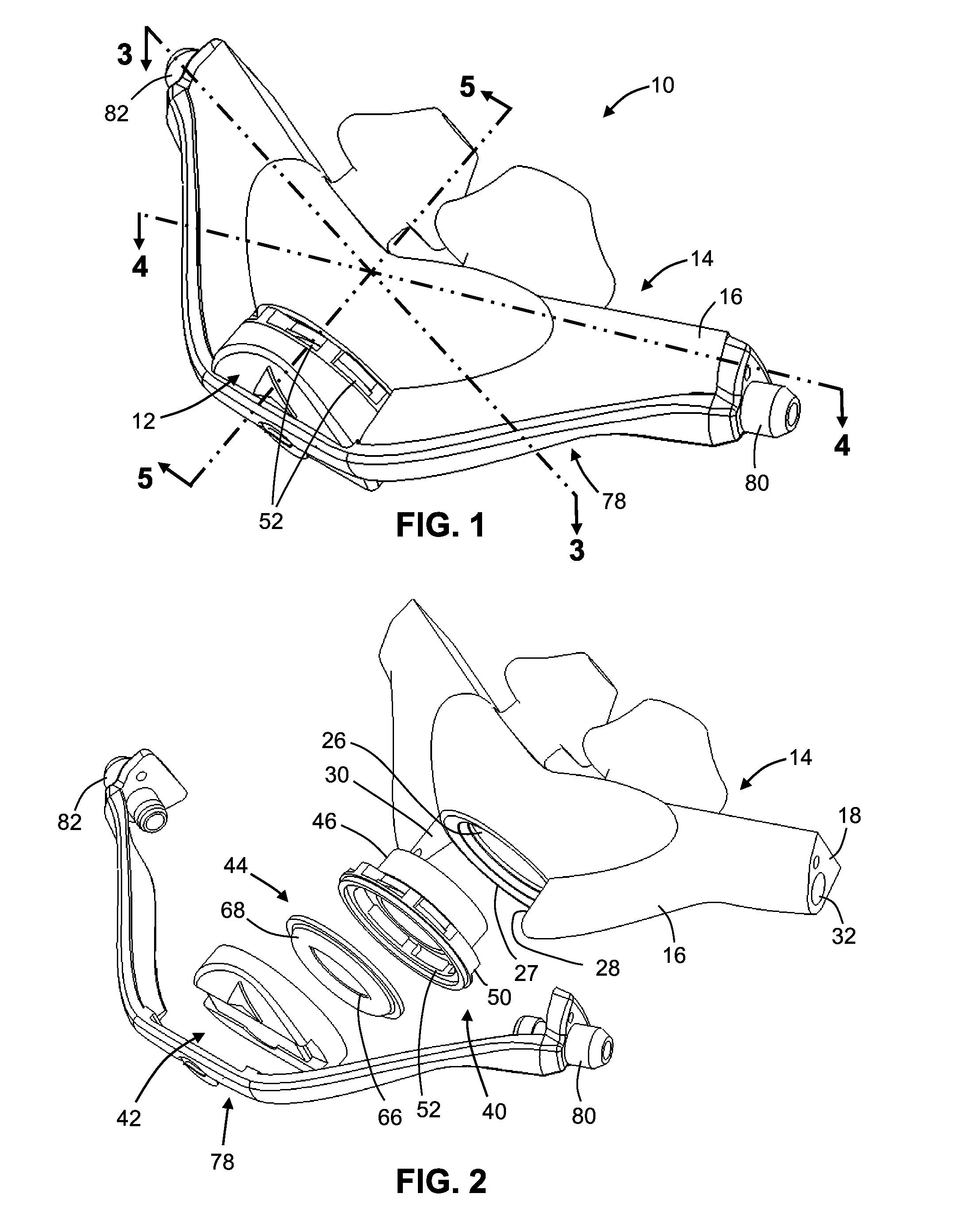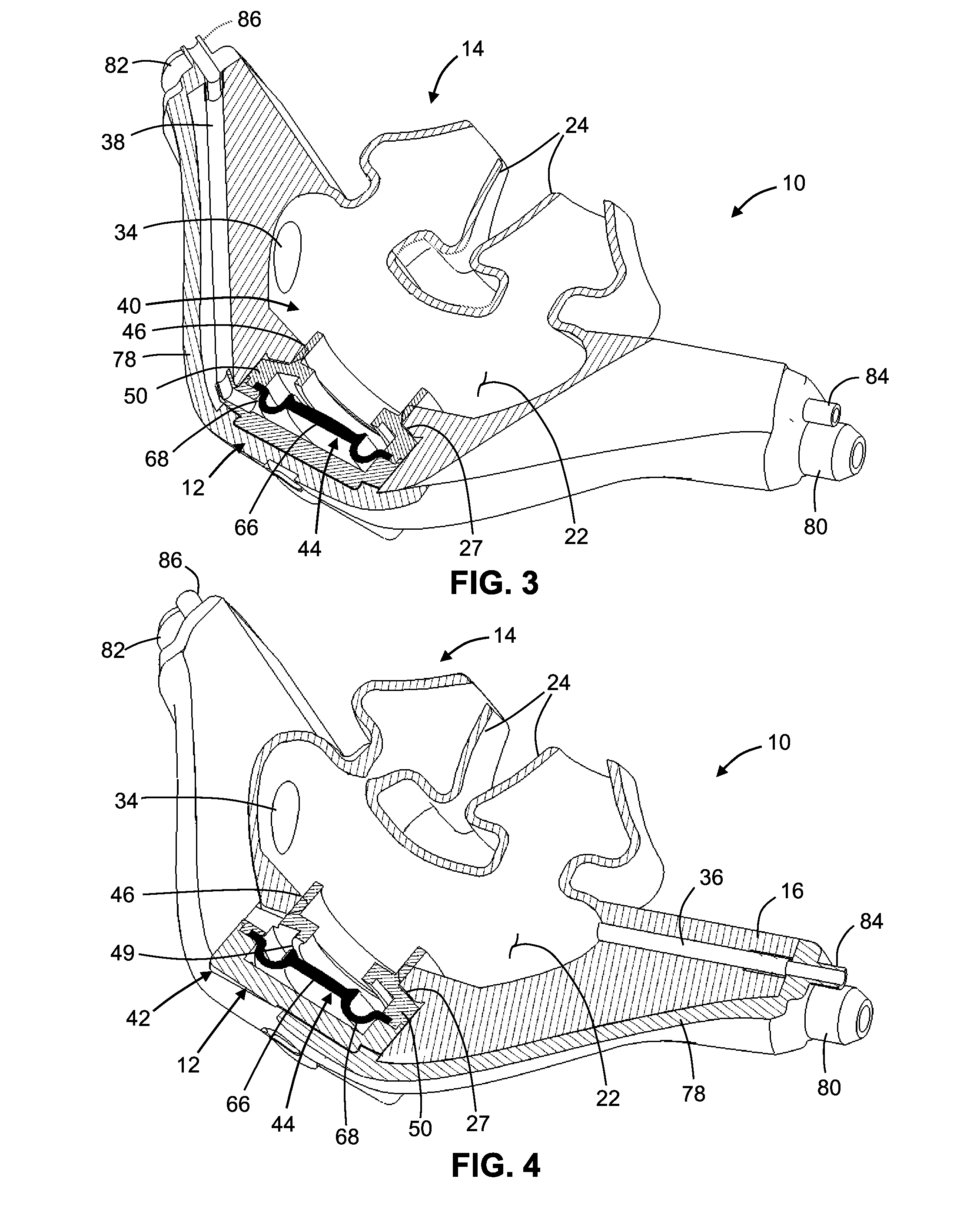Ventilation Mask with Integrated Piloted Exhalation Valve
a technology of exhalation valve and ventilation mask, which is applied in the field of ventilation mask, can solve the problems of high non-compliance rate, high patient pressure, and high non-compliance rate of cpap therapy, and achieves reduced flow, less bulk, and high functional dead space
- Summary
- Abstract
- Description
- Claims
- Application Information
AI Technical Summary
Benefits of technology
Problems solved by technology
Method used
Image
Examples
Embodiment Construction
[0048]Referring now to the drawings wherein the showings are for purposes of illustrating various embodiments of the present invention only, and not for purposes of limiting the same, FIGS. 1-4 depict a ventilation mask 10 (e.g., a nasal pillows mask) constructed in accordance with the present invention. Though the mask 10 is depicted as a nasal pillows mask, those skilled in the art will recognize that other ventilation masks are contemplated herein, such as nasal prongs masks, nasal masks, fill face masks and oronasal masks. As such, for purposes of this application, the term mask and / or ventilation mask is intended to encompass all such mask structures. The mask 10 includes an integrated, diaphragm-implemented, piloted exhalation valve 12, the structural and functional attributes of which will be described in more detail below.
[0049]As shown in FIGS. 1-5, the mask 10 comprises a housing or cushion 14. The cushion 14, which is preferably fabricated from a silicone elastomer having...
PUM
 Login to View More
Login to View More Abstract
Description
Claims
Application Information
 Login to View More
Login to View More - R&D
- Intellectual Property
- Life Sciences
- Materials
- Tech Scout
- Unparalleled Data Quality
- Higher Quality Content
- 60% Fewer Hallucinations
Browse by: Latest US Patents, China's latest patents, Technical Efficacy Thesaurus, Application Domain, Technology Topic, Popular Technical Reports.
© 2025 PatSnap. All rights reserved.Legal|Privacy policy|Modern Slavery Act Transparency Statement|Sitemap|About US| Contact US: help@patsnap.com



